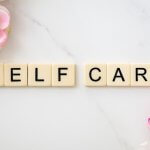I recently watched a reel on Instagram that shook me to my core. A woman shared how her mother—vibrant, hardworking, and always putting others first—passed away suddenly from a stroke. She had been under immense stress, developed high blood pressure, and never truly rested. One day she was there, and the next… gone. No warning. No time to say goodbye.
Rest isn’t laziness—it’s a radical act of self-love. And sometimes, it’s the difference between life and death. It’s the quiet pause that prevents the loudest heartbreak. It’s the sacred space where healing begins before illness has a chance to speak.
In our fast-paced world, napping is often dismissed as indulgent or unproductive. But science and soul both tell us otherwise. A well-timed nap can boost memory, reduce stress, improve heart health, and restore emotional balance. So today, let’s explore the do’s and don’ts for a refreshing nap—a guide to reclaiming rest as a sacred ritual.

The Do’s: How to Nap Like a Pro
1. Keep It Short and Sweet
The magic number? 20 to 30 minutes. This is the sweet spot for a power nap—long enough to refresh your brain, but short enough to avoid grogginess or sleep inertia. Anything longer can push you into deeper sleep stages, making it harder to wake up and function.
2. Nap Early in the Day
Aim for a nap between 1:00 and 3:00 PM. This aligns with your natural circadian rhythm and avoids interfering with nighttime sleep. Late afternoon naps can disrupt your ability to fall asleep at night, especially if you’re sensitive to sleep cycles.
3. Create a Calm, Cozy Space
Your nap environment matters. Choose a quiet, dark room with a comfortable temperature. Use blackout curtains, a sleep mask, or white noise if needed. This isn’t just about comfort—it’s about signaling to your nervous system that it’s safe to relax.
4. Use a Gentle Alarm
Waking up abruptly can jolt your system and undo the benefits of your nap. Opt for a soft chime or nature sounds to ease back into wakefulness. Give yourself a few minutes to stretch, breathe, and reorient before jumping back into tasks.
5. Listen to Your Body
Not everyone needs a nap every day. But if you’re feeling foggy, irritable, or emotionally drained, a short nap might be exactly what your body is asking for. Honor that whisper. It’s your body’s way of protecting you.
The Don’ts: Common Nap Mistakes
1. Don’t Nap Too Long
It’s tempting to snooze for an hour or more, especially on weekends. But long naps can lead to sleep inertia—where you wake up feeling groggy, disoriented, and worse than before. They can also disrupt your nighttime sleep, creating a cycle of fatigue.
2. Avoid Late-Day Naps
Napping after 3:00 PM can confuse your internal clock. It’s like eating dinner at midnight—it throws everything off. If you must nap later, keep it ultra-short (10–15 minutes) and follow it with movement or sunlight exposure to reset your rhythm.
3. Skip the Caffeine Before Napping
Coffee before a nap? Not a good idea. Caffeine takes time to metabolize and can interfere with your ability to fall asleep. If you’re planning a nap, avoid stimulants at least an hour beforehand.
4. Don’t Nap in Distracting Spaces
Trying to nap in a noisy, bright, or cluttered environment is like trying to meditate in a shopping mall. Your brain needs cues of safety and stillness to truly let go. Make your nap space sacred—even if it’s just a corner with a blanket and a diffuser.
Bonus Tips for a Holistic Nap Ritual
Naps aren’t just about catching up on sleep—they can be a gateway to deeper restoration. When approached with intention, even a brief pause can become a meaningful ritual that nurtures both body and mind.
1. Add Calming Scents
Lavender, chamomile, or sandalwood essential oils can soothe your nervous system and deepen relaxation. Dab a little on your wrists or use a diffuser nearby.
2. Try a Guided Meditation
Apps like Insight Timer or Calm offer short nap meditations that gently guide you into rest. Even a 10-minute body scan can reset your energy and calm your mind.
3. Use a Weighted Blanket
Weighted blankets provide gentle pressure that mimics a hug, activating your parasympathetic nervous system. This can reduce anxiety and help you fall asleep faster.
4. Journal Before You Nap
If your mind is racing, take 5 minutes to write down your thoughts. This simple act of release can clear mental clutter and make space for rest.
Conclusion: Embrace the Pause
In a world that glorifies hustle, choosing rest is revolutionary. It’s a way of saying, “I matter. My health matters. My peace matters.”
So the next time you feel that mid-day slump, don’t reach for another coffee or push through the fatigue. Instead, pause. Close your eyes. Breathe. Nap.
Let it be your way of coming home to yourself.
Because rest isn’t weakness—it’s wisdom.














